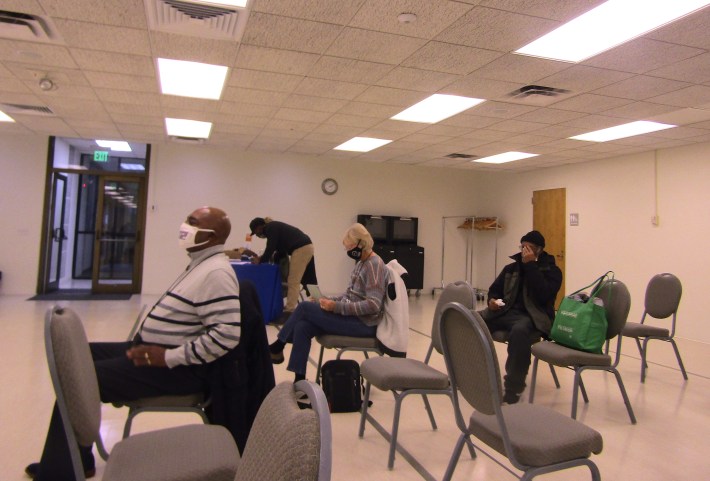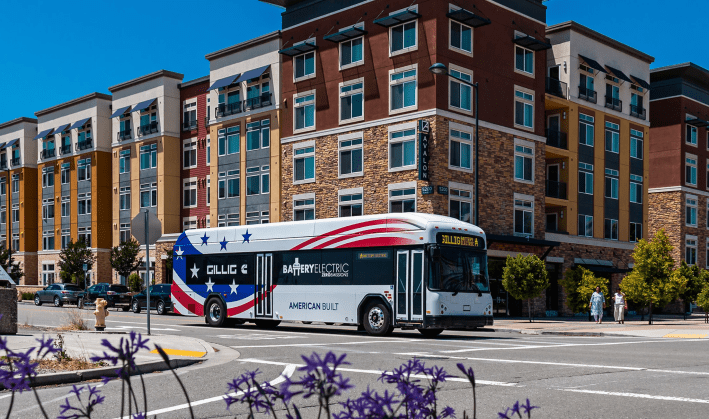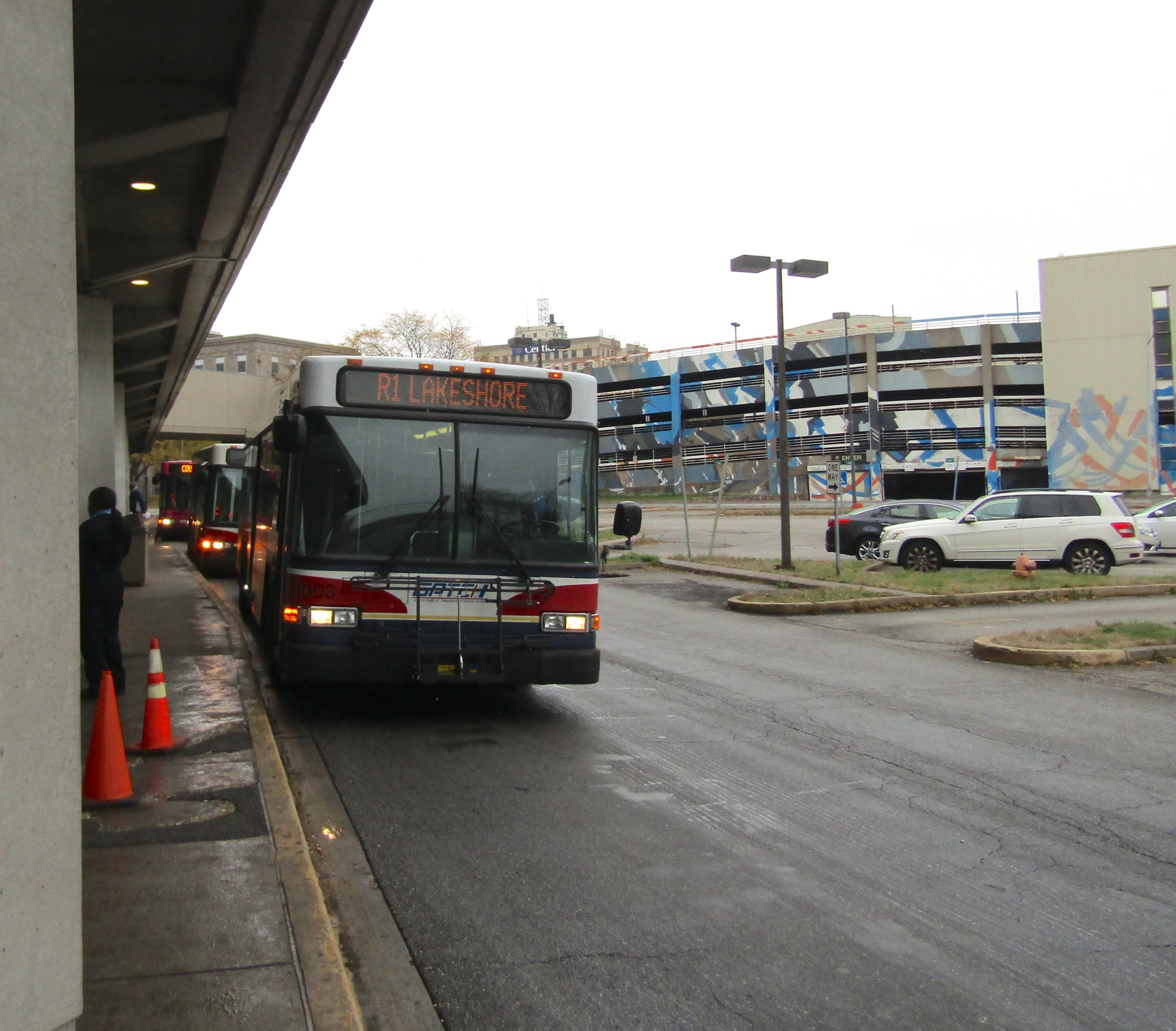Gary Public Transportation Corporation, which operates bus service in Gary, Indiana and a few other nearby Northwest Indiana municipalities, is launching a pilot of sorts on its busiest corridor to see how well the buses perform during winter. If the test is successful, the city where steel mill smoke still dominates the skyline (even if the city’s steel industry is a fraction of what it used to be) and the Jackson 5 got their start may have fully-electric transit within the next decade.
GPTC bought four electric buses that are expected to be delivered by late spring/early summer. They will primarily be used on the Broadway, one of Gary’s main commercial thoroughfares, and the busiest transit corridor. David Wright, planning and marketing manager for the transit agency, said that they want to see how well the buses stand up to the weather and their regular passenger loads. “If the experiment works, we’ll make the entire fleet electric,” he said. “But this is us sticking the toe in the water.”
The agency unveiled its plans during the November 15 Fall Summit, which was held at Gary’s main public library in the afternoon. Agency officials used the occasion to announce several programs and initiatives, and take questions from riders. The summit emphasized just how how underfunded the transit agency is. The electric buses only came about because of a state grant, and any further service expansion hinges on additional outside funding.

GPTC has five routes within Gary proper, two regional routes that connect Gary to nearby suburbs, three regional routes that are completely outside Gary (but connect to routes that do go into the city) and the Broadway Metro Express (R-BMX), which serves the Broadway corridor in Gary, Merrillville and Crown Point. Regional Route R1 connects to Pace routes 350 and 364 in downtown Hammond, but there are no transfer fares between the two systems.
Wright said that, while the Gary transit system wasn’t spared from the affect of the pandemic. During the height of the pandemic, ridership dropped to 40 percent of the regular level, which, he noted, was still higher than national average and highlighted how important their buses are to the region. By December 2021, ridership rebounded to about 55 percent of regular levels.
While both the CTA and Pace are moving toward adding electric buses, they have larger fleets to work with than Gary does. CTA has 1,835 buses and Pace has 740 buses, while GPTC has only 20 fixed-route buses and seven paratransit buses.
For now, GPTC has ordered four 35-seat electric buses and four diesel buses to replace seven buses it bought in 2007. Wright said that the vehicles have a service life of 11 years. According to the 2020 Indiana Department of Transportation Public Transit Report, the most recent report currently available, Gary has nine buses purchased in 2010, three bought in 2014, and one that was purchased in 2018. That means GPTC will need to replace at least nine buses over the next few years.
The funding for the rolling stock purchase came from a $3.2 million grant from Indiana Volkswagen Environmental Mitigation Trust Fund. In 2015, Volkswagen was found to have violated the federal Clean Air Act after selling 500,000 cars that came with devices that fooled emissions tests. Under the 2017 settlement, the car marker agreed to pay out $4.3 billion, with Indiana getting $41 million.
GPTC bought the buses from Livemore, California based-Gillig, the second-largest bus manufacturer in United States which, has made all the fixed-route buses GPTC currently has in service. Wright said that the transit agency was impressed with the electric buses Gillig helped built for Indianapolis’ public transit system.

“If you go down to Indianapolis and ride the Red Line, it’s excellent," he said. "It’s so quiet it's almost a safety hazard. Most, if not all drivers who drive electrics down there prefer to drive electric [buses]. The technology is cleaner and the response is quicker.” GPTC also liked that 80 percent of the bus parts were the same as the ones in Gillig’s diesel buses.
Still, Wright noted that the buses were going to be “low-emission, not zero-emission,” because they will be using gas-powered heaters. “That’s something that most cold-weather eclectic bus recipients are going to do."
Wright added that the bus drivers would need to be trained to handle the new electric buses, since they respond quicker. Gillig will send a consultant “to help us perfect the rollout.”
There will be at least three buses running on the BMX route at any given time. The buses will be charged overnight at GPTC’s existing garage and maintenance facility. The transit agency also plans to build a new driver relief facility on the land it owns at the intersection of 20th Avenue and Broadway, which would include additional charging stations the buses would be able to use during the day.
Wright said that GPTC will decide how many additional electric buses they will buy, and when, based on how well the first four buses do. “Once we know, after a couple of years, what the average mileage is gong to be, it’s going to inform how many [electric buses] are going to purchased.”
Asked whether the electric buses will have any special features other than the power source, Wright said that GPTC is looking into adding transit signal priority technology for Broadway, which would shorten red lights or lengthen green lights to facilitate bus service. The traffic lights on the portion of the corridor south of 53rd Street, which accounts for about a half of the route, are already equipped to accommodate the technology
“We don’t know whether or not we’re going to have Wii-F,” Wright added. “We’ll see if we can afford it.”
Most Pace buses have Wi-Fi, but only because the suburban bus transit agency was able to tie the service into its bus surveillance cameras. CTA buses don’t have it, and neither do any buses elsewhere in Northwest Indiana.
The summit also touched on the potential service expansion to serve the stations of the South Shore Line’s newly built West Lake branch, which will serve south Hammond, Munster, and Dyer. GTPC’s Route R1 currently serves downtown Hammond, the city of East Chicago, and western Gary, while Route R4 services south Hammond, Munster and nearby Highland.
Wright said GTPC is looking into rerouting R1 and R4 to better serve the new branch, but anything beyond that would require funding they don’t currently have. He noted that the most recent service expansions outside Gary, including Route R4, got funding support from the municipalities they served.
“We made it known, since the West Lake corridor was envisioned, there needs to be attention paid to feeder bus service,” Wright said. “We’d like to see feeder service, but we can’t do that without some kind of a funding arrangement.”





